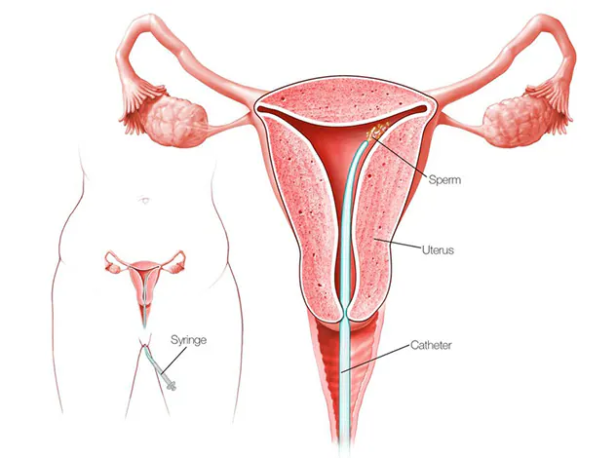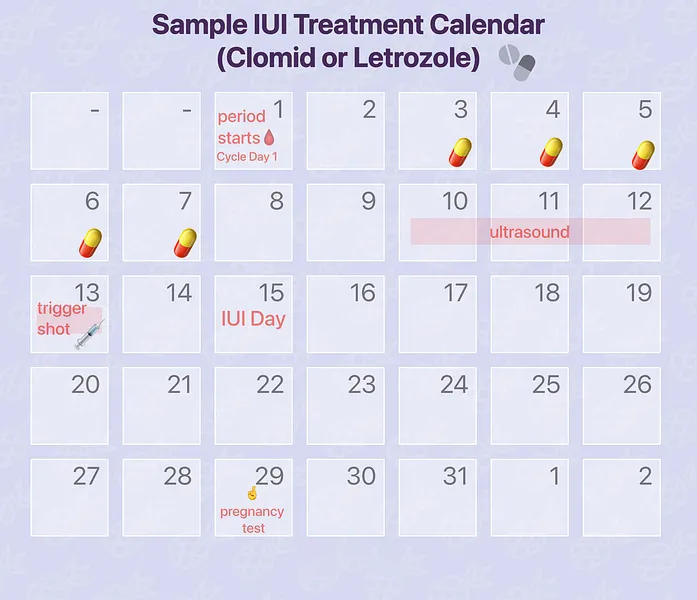Intrauterine Insemination (IUI) in Iran

Intrauterine insemination (IUI) stands as a therapeutic procedure addressing infertility, enhancing the prospects of pregnancy by introducing specifically prepared sperm directly into the uterus—the crucial site for fetal development. This technique is also known as artificial insemination.
During IUI, sperm is introduced around the time of ovary egg release. The desired outcome is the fusion of sperm and egg within the fallopian tube, connecting the uterus to the ovaries. Successful union in this pathway leads to pregnancy.
The timing of intrauterine insemination can be synchronized with an individual’s menstrual cycle, coinciding with the monthly release of an egg from one of the two ovaries. Alternatively, fertility medications may be incorporated alongside IUI to stimulate egg production in the ovaries. The selection of the precise method hinges on the specific causes of infertility
Why It's Performed
The ability of an individual or a couple to conceive is influenced by various factors. Intrauterine insemination is commonly employed in scenarios such as:
1. Utilization of Donor Sperm: This is a viable option when the sperm is either unavailable or of poor quality, or for single individuals wishing to conceive. Donor sperm, which can come from either known or anonymous donors, is typically procured from certified laboratories and prepared before the IUI process.
2. Addressing Unexplained Infertility: IUI is frequently the initial treatment in cases of unexplained infertility, often combined with medications that stimulate egg production in the ovaries.
3. Endometriosis-Related Infertility: When tissue similar to the uterine lining grows outside the uterus, known as endometriosis, fertility issues may arise. The first line of treatment usually involves medication to produce high-quality eggs, coupled with IUI.
4. Mild Male Factor Infertility (Subfertility): Difficulties in conception due to issues with semen, like abnormalities in sperm count, morphology, or motility, are addressed. Semen analysis is used to identify these problems, and IUI can help by using a preparation process that isolates higher quality sperm.
5. Cervical Factor Infertility: Infertility can stem from issues with the cervix, such as thick cervical mucus or scarring from previous procedures, which may hinder sperm movement. IUI aids by bypassing the cervix, directly placing sperm into the uterus, thus enhancing the likelihood of pregnancy.
6. Ovulatory Factor Infertility: IUI is also a method for individuals facing infertility due to ovulation issues, including an absence of ovulation or a reduced egg count.
7. Semen Allergy: In rare instances, an allergic reaction to proteins in semen can occur, causing discomfort and swelling upon contact with the skin. While condoms can prevent these symptoms, they also prevent pregnancy. IUI is a solution as it allows pregnancy while removing most semen proteins that cause the allergic reaction.
The IUI Process Step by Step
Risks Involved
Intrauterine insemination is generally a straightforward and safe intervention. The likelihood of serious health complications is minimal. However, there are a few risks, which include:
1. Infection: Although rare, there is a minor risk of infection following the IUI procedure.
2. Spotting: The procedure involves the insertion of a slender catheter through the vagina into the uterus for sperm injection. Occasionally, this insertion can cause minor vaginal bleeding known as spotting. Typically, this has no significant impact on the probability of conceiving.
3. Multiple Pregnancies: The IUI process itself does not significantly increase the chances of a multiple pregnancy (such as twins or triplets). However, when combined with fertility medications, the likelihood of conceiving multiple babies increases. It’s important to note that pregnancies involving multiple babies carry greater risks than single pregnancies, including the possibility of premature birth and lower birth weights.
Preparation Steps
Prior to undergoing intrauterine insemination, several important preparatory steps are taken:
1. Monitoring Ovulation: Accurate timing is crucial for IUI success. Monitoring for ovulation involves using an at-home urine test kit to detect a surge in luteinizing hormone (LH), which signals that the ovary is about to release an egg. Alternatively, a transvaginal ultrasound might be employed to visually monitor the ovaries and egg development. Additionally, you may receive an injection of human chorionic gonadotropin (HCG) or other medications to induce the release of one or more eggs at the optimal time.
2. Precise Timing: IUI is typically scheduled for a day or two following the detection of ovulation signs. Your healthcare provider will provide a detailed schedule for the IUI procedure, outlining what you should expect.
3. Semen Sample Preparation: This involves either obtaining a fresh semen sample from your partner at the clinic or thawing a frozen donor sample. The semen is then processed through a method known as “washing,” which isolates the most active and healthy sperm from those of lower quality. This process also removes components that could cause adverse reactions, such as intense cramping, when introduced into the uterus. Utilizing a concentrated sample of high-quality sperm increases the probability of successful conception.
Procedure Expectations
Your appointment for the intrauterine insemination usually takes place at a doctor’s office or a specialized clinic. The IUI process itself is brief, typically lasting only a few minutes after the semen has been prepared. This procedure does not require any medications or pain relief measures. A qualified healthcare professional, either your doctor or a nurse trained in this specific procedure, will carry out the IUI.

The IUI Process Step by Step
Procedure Details
During the intrauterine insemination process, you will be positioned on an examination table with your legs placed in stirrups. A device known as a speculum, which can be made of plastic or metal, is used to gently open the vaginal walls. The steps followed by the doctor or nurse include:
1. Affixing a container holding the selected healthy sperm to a slender, flexible instrument called a catheter.
2. Inserting the catheter through the vagina, passing the cervix, and then into the uterus.
3. Deploys the sperm from the container through the catheter into the uterus.
4. Withdrawal of the catheter is then followed by the removal of the speculum.
Post-Procedure
Following the insertion of the sperm into your uterus, you’ll typically remain lying down for a short period. After the procedure, you are free to dress and resume your normal activities. It’s common to experience slight vaginal spotting for a day or two afterwards.
Results and Follow-Up
Wait for a period of two weeks before attempting an at-home pregnancy test. Testing prematurely may yield results that are:
1. False-Negative: The test indicates no evidence of pregnancy when, in reality, you may be pregnant. This can occur if pregnancy hormones have not reached detectable levels.
2. False-Positive: The test detects a pregnancy signal when you are not actually pregnant. This can happen if you have recently used fertility medications like HCG, and remnants of the medication are still present in your system.
Around two weeks following your at-home pregnancy test, you may have a follow-up appointment. During this visit, a blood test may be administered, offering a more accurate detection of pregnancy hormones post-fertilization.
If conception does not occur, you might consider undergoing IUI again before exploring alternative fertility treatments. Typically, the same protocol is followed for 3 to 6 treatment cycles to optimize the chances of achieving pregnancy.

Sample IUI cycle treatment calendar

The IUI Timeline - Day by Day
If you would like the best IUI doctors and surgeons in Iran’s first-class hospitals to perform your surgery, and at the same time be comfortable and stress-free during your treatment and stay in Iran at a reasonable cost, like your home.
FAQ
Yes, it is possible to undergo Intrauterine Insemination (IUI) after In Vitro Fertilization (IVF). IUI following IVF is typically considered in cases of male factor infertility or if there are issues with cervical mucus. This combination aims to improve the chances of fertilization by directly placing sperm into the uterus. Consulting with a fertility specialist is essential to determine if IUI after IVF is the most suitable treatment for a specific situation.
The likelihood of pregnancy with IUI (intrauterine insemination) varies based on factors such as age, the cause of infertility, and the number of IUI cycles attempted. According to data from the American Society for Reproductive Medicine, the success rate for IUI is approximately 10-20% per cycle for women under 35. For women over 40, the success rate tends to be lower, around 5%. Assisted reproductive technologies (ART), such as in vitro fertilization (IVF), can enhance the chances of pregnancy with IUI.
The risk associated with IUI (intrauterine insemination) is generally low. Common risks include mild discomfort, cramping, and bloating during the procedure. There is a small risk of infection or bleeding, and in rare cases, multiple pregnancies may occur. Overall, the likelihood of complications is considered low, and serious issues are uncommon. It is crucial to discuss potential risks and benefits with a healthcare provider before undergoing IUI, as with any medical procedure.




